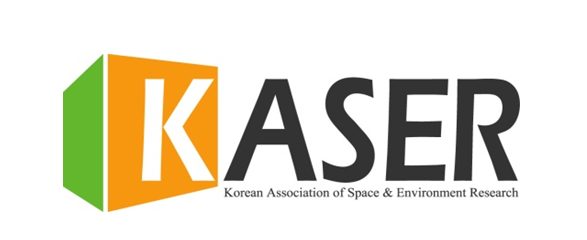ISSN : 1225-6706
논문 상세
- 2024 (34권)
- 2023 (33권)
- 2022 (32권)
- 2021 (31권)
- 2020 (30권)
- 2019 (29권)
- 2018 (28권)
- 2017 (27권)
- 2016 (26권)
- 2015 (25권)
- 2014 (24권)
- 2013 (23권)
- 2012 (22권)
- 2011 (21권)
- 2010 (33호)
- 2009 (31호)
- 2008 (29호)
- 2007 (27호)
- 2006 (26호)
- 2005 (23호)
- 2004 (21호)
- 2003 (19호)
- 2002 (17호)
- 2001 (15호)
- 2000 (13권)
- 1999 (11권)
- 1998 (10권)
- 1997 (8권)
- 1996 (7권)
- 1995 (5권)
- 1994 (4권)
- 1993 (3권)
- 1992 (2권)
- 1991 (1권)
경유화물차 축소를 위한 전환 관리의 방향 모색: 유가보조금 제도 개편을 중심으로
The Practice of Transition Management to Reduce Diesel Trucks: Focusing on the Fuel Tax Subsidies in Korea
윤순진 (서울대학교)
박진영 (서울대학교)
박선아 (서울대학교 환경대학원)
Abstract
미세먼지 저감을 위한 경유차 운행 축소 방안으로 경유세 인상이 거론되고 있다. 하지만 경유세 인상에 대한 사회적 저항이 거세기 때문에 경유 상대가격을 높이는 조치를 취하는 것이 쉽지 않은 상황이다. 특히 사업용 경유화물차는 경유세가 인상되더라도 인상액 만큼 유가보조금을 지급받을 수 있고 이해관계자들이 가장 조직적으로 저항할 가능성이 높기 때문에 논란의 중심에 서 있다. 그러나이해관계자들의 입장을 분석한 연구가 부족한 탓에 유가보조금 제도를 개편할 수있는 정치사회적 조건과 전환 관리 방향에 대한 논의는 거의 이뤄지지 않고 있다. 이 연구는 유가보조금 제도 개편을 둘러싼 이해관계자들의 갈등 구도를 분석하고 유가보조금 축소·폐지를 위한 전환 관리의 방향을 모색하는 것을 목표로 한다. 심층면접 결과, 경유화물차 미세먼지 대책의 실효성, 경유세 인상의 필요성, 친환경 화물차로의 대체 가능성, 물류비용 현실화가 이해관계자들 간의 주요 갈등 쟁점으로 확인되었다. 이와 같은 연구 결과로 볼 때, 유가보조금 제도 개편이 추진될 경우 이해관계자들은 경유화물차의 책임 수준과 정부의 대응 정책 평가, 경유세 인상과 유가보조금 제도 개편 방안을 놓고 대립할 것으로 예상된다. 하지만 유가보조금 제도 개편을 둘러싼 갈등 구도는 미세먼지 피해에 대한 인식, 경유차대책, 물류비용 분담 방식에 따라 변할 수 있다. 유가보조금 제도 사례는 전환장의 형성을 위해 권력과 자원의 재분배를 통한 이해관계의 재조직화가 필요함을 시사한다. 전환 관리는 전략적 틈새 관리를 넘어선 갈등의 재조직화로 확장되어야 한다.
- keywords
- transition management, fuel tax subsidies, particulate matters, fine dust, diesel trucks, 전환 관리, 미세먼지, 경유세, 유가보조금, 경유화물차
참고문헌
국립환경과학원 국가대기오염물질배출량 서비스(airemiss.nier.go.kr).
국토교통부. 2018. 「화물자동차운수사업법 일부개정법률 공포안」.
국토해양부. 2009. 「물류업종 기업물류비 상세해설서」.
권혁구·허진수·박한영·주인식. 2012. 「화물자동차 유가보조금 제도 개선방안 연구」. 한국교통연구원.
김은정·오형나·홍인기·홍종호. 2015. 「에너지가격규제에 관한 법·경제적 융합 연구」. 한국법제연구원.
김종호·김호석·이현지. 2017. 「환경유해보조금 추계 및 개편방향 연구: 화석연료보조금을 중심으로」. 한국환경정책평가연구원.
윤순진 외. 2018. 「미세먼지 저감을 위한 경유화물차 대체 시나리오 분석」. 정책기획위원회 재정개혁특별위원회.
이혜경. 2018. 「국내외 주요 도심 경유차 규제 현황 및 시사점」. 국회입법조사처.
임동민. 2012. 「화물자동차운송시장의 구조와 유가보조금의 경제적 효과」. 서울대학교 박사학위논문.
정승주·이태형·권혁구·임동민·허진수. 2008. 「화물운송산업 지입제도 개선방안 연구」. 한국교통연구원.
정승주·이태형·권혁구·양정훈. 2009. 「화물운송 표준운임제 도입방안」. 한국교통연구원.
최진석·이태형·권혁구·허진수. 2008. 「LNG 화물자동차 도입방안 연구」. 한국교통연구원.
추장민 외. 2017. 「녹색경제와 지속가능발전을 위한 환경정책 뉴 패러다임 개발」. 한국환경정책·평가연구원.
하능식·이선영. 2017. 「미래지향적 지방세제 정상화 방안」. 한국지방세연구원.
한국교통안전공단. 2018. 「2017 자동차주행거리통계」.
한국교통연구원. 2018. ≪KOTI 물류브리프≫, 10권 3호.
한국교통연구원 화물운송시장정보센터(http://roft.koti.re.kr)
≪동아일보≫, 2019.3.14, “미세먼지 특별재난지역 선포 가능해진다”.
Avelino, F. 2009. “Empowerment and the Challenge of Applying Transition Management to Ongoing Projects.” Policy Science, 42, pp. 39∼390.
Avelino, F. et. al. 2016. “The Politics of Sustainability Transitions.” Journal of Environmental Policy & Planning, 18(5), pp. 557∼567.
Elzen, B., F. Geels and K. Green. 2004. System Innovation and the Transition to Sustainability:Theory, Evidence and Policy. Edward Elgar.
European Commission TEN-T(https://ec.europa.eu/inea/en/ten-t).
Fligstein, N., and D. McAdam. 2012. A Theory of Fields. Oxford University Press.
Geels, F. 2014. “Regime Resistance against Low-Carbon Transitions: Introducing Politics and Power into the Multi-Level Perspective.” Theory, Culture & Society, 31(5), pp. 21∼40.
Hölscher, K. et. al. 2017. “Opening Up the Transition Arena: An Analysis of (Dis)empowerment of Civil Society Actors in Transition Management in Cities.” Technological Forecasting & Social Change (in Press) DOI: https://doi.org/10.1016/j.techfore. 2017.05.004.
Jhagroe, S., and D. Loorbach. 2015. “See No Evil, Hear No Evil: The Democratic Potential of Transition Management.” Environmental Innovation and Societal Transitions, 15, pp. 65∼83.
Kern, F. 2012. “An International Perspective on the Energy Transition Project,“ in G. Verbong and D. Loorbach (eds.), Governing the Energy Transition: Reality, Illusion or Necessity?. NewYork: Routledge.
Kivimaa, P., and F. Kern. 2016. “Creative Destruction or Mere Niche Support? :Innovation Policy Mixes for Sustainability Transitions.” Research Policy, 45, pp. 205∼217.
Köhler, J. et. al. 2019. “An Agenda for Sustainability Transitions Research: State of the Art and Future Directions.” Environmental Innovation and Societal Transitions. In Press. https://doi.org/10.1016/j.eist.2019.01.004.
Loorbach, D., and J. Rotmans. 2010. “The Practice of Transition Management: Examples and Lessons form Four Distinct Cases.” Futures, 42, pp. 237∼246.
Meadowcroft, J. 2005. “Environmental Political Economy, Technological Transitions and the State.” New Political Economy, 10(4), pp. 479∼498.
Raven, R. 2012. “Analyzing Emerging Sustainable Energy Niches in Europe: A Strategic Niche Management Perspective.” in G. Verbong and D. Loorbach (eds.), Governing the Energy Transition: Reality, Illusion or Necessity?. NewYork: Routledge.
Smith, A. and A. Stirling. 2010. “The Politics of Social-ecological Resilience and Sustainable Socio-technical Transitions.” Ecology and Society, 15(1), http://www.ecologyandsociety.org/vol15/iss1/art11/.
TRIMIS LNG Blue Corridors (https://trimis.ec.europa.eu/project/lng-blue-corridors).
Verbong, G., and D. Loorbach. 2012. “Introduction.” in G. Verbong and D. Loorbach (eds.), Governing the Energy Transition: Reality, Illusion or Necessity?. NewYork:Routledge.
Voß, J., A. Smith and J. Grin. 2009. “Designing Long-term Policy: Rethinking Transition Management.” Policy Science, 42, pp. 275∼302.
- 다운로드 수
- 조회수
- 0KCI 피인용수
- 0WOS 피인용수

